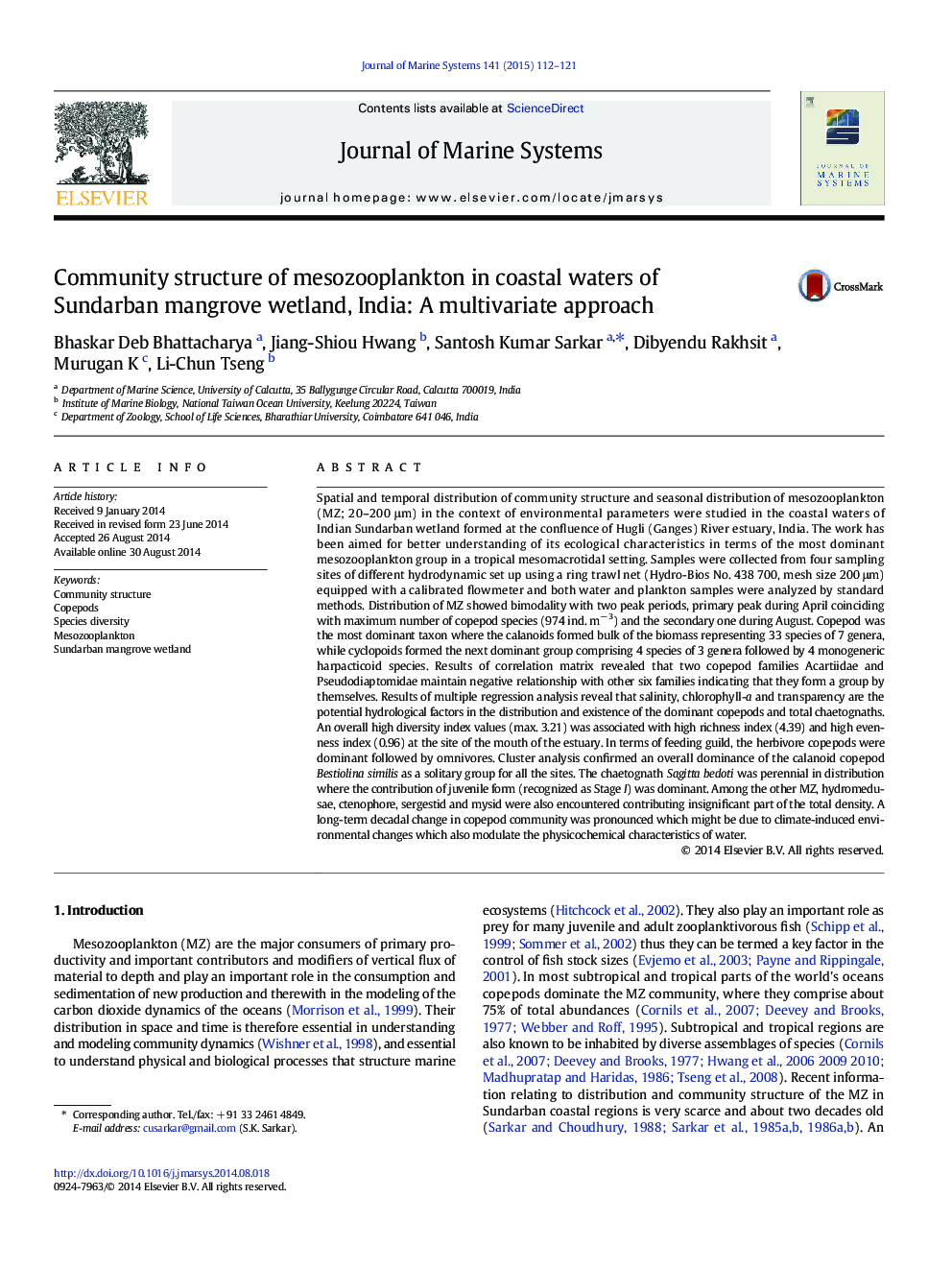| کد مقاله | کد نشریه | سال انتشار | مقاله انگلیسی | نسخه تمام متن |
|---|---|---|---|---|
| 6386838 | 1627288 | 2015 | 10 صفحه PDF | دانلود رایگان |

- Copepods formed dominant group of mesozooplankton comprising 41 species.
- Chaetognath (Sagitta bedoti) dominated by juveniles indicating continuous breeding.
- Decadal changes in copepod community and their feeding guilds were recorded.
- Salinity, chl-a and transparency are causative factors for copepods, chaetognaths.
Spatial and temporal distribution of community structure and seasonal distribution of mesozooplankton (MZ; 20-200 μm) in the context of environmental parameters were studied in the coastal waters of Indian Sundarban wetland formed at the confluence of Hugli (Ganges) River estuary, India. The work has been aimed for better understanding of its ecological characteristics in terms of the most dominant mesozooplankton group in a tropical mesomacrotidal setting. Samples were collected from four sampling sites of different hydrodynamic set up using a ring trawl net (Hydro-Bios No. 438 700, mesh size 200 μm) equipped with a calibrated flowmeter and both water and plankton samples were analyzed by standard methods. Distribution of MZ showed bimodality with two peak periods, primary peak during April coinciding with maximum number of copepod species (974 ind. mâ 3) and the secondary one during August. Copepod was the most dominant taxon where the calanoids formed bulk of the biomass representing 33 species of 7 genera, while cyclopoids formed the next dominant group comprising 4 species of 3 genera followed by 4 monogeneric harpacticoid species. Results of correlation matrix revealed that two copepod families Acartiidae and Pseudodiaptomidae maintain negative relationship with other six families indicating that they form a group by themselves. Results of multiple regression analysis reveal that salinity, chlorophyll-a and transparency are the potential hydrological factors in the distribution and existence of the dominant copepods and total chaetognaths. An overall high diversity index values (max. 3.21) was associated with high richness index (4.39) and high evenness index (0.96) at the site of the mouth of the estuary. In terms of feeding guild, the herbivore copepods were dominant followed by omnivores. Cluster analysis confirmed an overall dominance of the calanoid copepod Bestiolina similis as a solitary group for all the sites. The chaetognath Sagitta bedoti was perennial in distribution where the contribution of juvenile form (recognized as Stage I) was dominant. Among the other MZ, hydromedusae, ctenophore, sergestid and mysid were also encountered contributing insignificant part of the total density. A long-term decadal change in copepod community was pronounced which might be due to climate-induced environmental changes which also modulate the physicochemical characteristics of water.
Journal: Journal of Marine Systems - Volume 141, January 2015, Pages 112-121